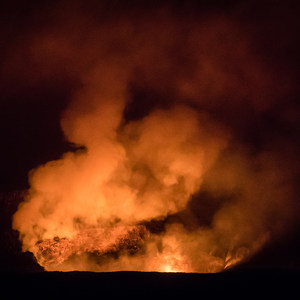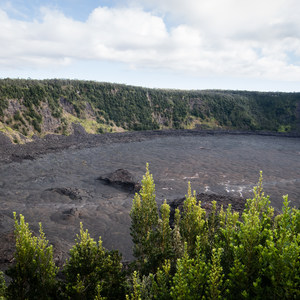You are here
Most outdoor enthusiasts would agree that outdoor adventures should always strive to have a limiting impact on a place. Practicing the Seven Principles of Leave No Trace is an excellent start to minimizing our corporeal footprint left on a place. However, leaving your mark on a place doesn’t necessarily mean you’ve left a physical footprint, or one that is evident via our senses. Aside from how we shape the landscape, we can reshape a culture, leaving our trace on a community’s identity, without ever realizing it. Living abroad and in Hawai‘i has made me rethink the traces we leave on places, and the very real harm we inflict on a place’s identity, values, and customs.
Consider the seemingly harmless construction of rock towers, for instance. When I was younger, I wasn’t sure I totally agreed with the LNT argument that rock stacking creates eyesores and alters landscapes. Nature play is important for children and adults, and balancing rocks is the embodiment of this. Having playful interactions with our natural environment is just one way to foster sustained attitudes of stewardship and maintain a joyful, healthy mental state. I know that intense feeling of satisfaction that comes after you place your fifth rock, just so, showcasing seemingly absurd engineering skills. Achieving the balancing act feels so good at any age, and it is a sight to behold (or so you think). After all, it’s not like creating a rock tower is the same as carving into a tree, right? It’s temporary, and the next tide will wash it out to sea.
What I did not realize, however, is that the stone constructions can culturally reshape a place, and this argument is perhaps an even more compelling reason to stop. On the Big Island of Hawai‘i, I see this cultural tension playing out continually between local residents and tourists who build the towers or leave white coral “writing” in the black lava rock. Whether on historically significant Kiholo Beach, or deep in Kīlauea Iki crater in Hawai‘i Volcanoes National Park, people love leaving rock tower “tags," memorializing their presence in a place. Visitors to Hawai'i Volcanoes National Park have become so obsessed with building cairns to mark their visit, prohibitive signs had to be put up in certain areas where this behavior was prolific. Park officials and many Hawaiians actually call this type of structure sacrilegious since much of the park is deemed spiritually and historically significant. It is much like putting graffiti on a church, even if you personally believe the graffiti is beautiful. I long ago joined the crusade to not leave rock towers: You can build ‘em, just knock ‘em down before you leave!
Sometimes the marks we leave on a place are not obvious eyesores, however. Sometimes we leave our mark on a place and its people, and our ignorance remains unbeknownst to us. The idea of a cultural trace, or mark was most prominently brought to my attention while studying abroad as a college student in Nepal. While living in Kathmandu, I became familiar with an NGO called the Kathmandu Environmental Education Project that was devoted to educating tourists and visitors, essentially someone like me, on how to best interact with the landscape and communities of Nepal. While I had long practiced LNT, I hadn’t yet learned how to minimize my cultural footprint. I was able to learn from KEEP’s Travelers’ Information Centre how to be a visitor who was culturally aware, but it meant taking the time to learn about community values and acknowledging how my own might differ.
For instance, when I trekked in the Solu Khumbu area of Nepal, I made sure to walk clockwise around mani stones, stupas, monasteries, or prayer flags. I never hiked in shorts, even if the weather was “shorts weather” by American standards. I took off my shoes when entering homes. I never touched the heads of children, offered them sweets or money, or paid to take their photo. I called individuals who made a living carrying visitors' goods “porters” and NOT Sherpa (yup, there is a difference). I only ever ordered dal bhat when eating at lodges because it is easily cooked in bulk and doesn't require much fuel, which is often scarce wood, to prepare. Sometimes I learned things by making mistakes, but where I erred, I tried to do better the next time. I know my Western presence in many of these remote communities left a trace, but I was still obligated to try my best to minimize my own mark on a place.
The same has held true while living in Hawai‘i, my new home. Before I could adventure here responsibly, I needed more awareness of the cultural and environmental implications of my actions. I remember volunteering for conservation work on Mauna Kea when one of the coordinators stumbled across an unknown cave. Being the explorer that I am, I totally wanted to check it out; what adventurous soul wouldn’t? Thus, I was secretly a little annoyed when the coordinator deemed it “kapu” (forbidden) to go in. The coordinator had seen skulls within the cave when she initially entered, indicating that it was an ancient burial ground, and she herself had exited the cave immediately upon noticing the bones. I didn’t pout when there were Hindu temples in Kathmandu that I was forbidden from entering, so why was I being so insensitive about this cave, refusing to treat it as a sacred site rather than simply another interesting cave worthy of an adventure? Perhaps it was because, in many ways, Hawai‘i didn’t feel like a foreign world, one in which I was a visitor. But I was. I hadn’t bothered to think about how my actions in that moment might adversely affect another person or community in the long-run, and one with which I had not familiarized myself. I simply didn’t know enough about Hawaii’s history or its culture to fully comprehend the ramifications of my potential actions.
I still have a lot to learn about Hawai‘i, and I’m not going to pretend to be some sort of cultural expert on the people or places of the Big Island. However, I do feel that the best way to minimize your footprint is to actively educate yourself about the places you enter, and I continually strive to do this while living on such a culturally rich island. On one of LNT’s ethic cards labeled “International,” they have the following expectations:
- Many cultures consider their ancestral lands sacred.
- Be a respectful visitor. Respect the people who live and work in the countryside.
- Learn about and respect local customs and traditions.
Sometimes we think we are being considerate because our intentions are good, but until we truly educate ourselves about a place, we can’t fully comprehend the trace we leave. Why bother with the cultural components of LNT in an increasingly globalized world? Because, as the Kathmandu Environmental Education Project points out, “Above all, you are representative of an outside culture, and your impact lingers long after you return home.”
If you are visiting Oahu, learn more about Hawai‘i’s history with a visit the Iolani Palace, where an excellent educational movie is available. To learn more about how to be a responsible visitor in Nepal, visit the Kathmandu Environmental Education Project’s headquarters in the tourist district of Thamel.
For more thinking on Leave No Trace in a cultural context, be sure to read Rethinking Leave No Trace: Language and Place Names. For more articles on Leave No Trace generally, check out the following articles:








Comments
You're completely right. The Leave No Trace principles apply to so many facets of life, beyond the protection of physical natural spaces. Whenever we interact with the new places and people with different cultures than ours, we leave some sort of imprint, on ourselves and on them. When we post about it online, we take those imprints and leave a permanent digital trace. In a way, the act of sharing online takes away from the true complexities of an authentic interaction. Our post elevates our opinion above the many other important voices that made that story and exchange valuable. The only way to preserve its original form with true authentically is to apply LNT principles to the emotional, cultural, and historical realms as well in addition to the way we apply it to the earth. The very least we can do is start by taking the time to understand, ask questions, and learn beforehand (LNT principle #1!) so that we can include their voices into the stories we share online to people who may want to follow in our footsteps. Thank you for giving me so much to think about and for an inspiration to write again. I'd love to credit you when I finally wrap my head around my thoughts. Not sure if you're on social or if this is valuable to you, but let me know if this is something you'd be up for!
Thank you for featuring my photos as well!
Sign In and share them.